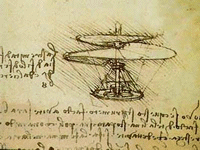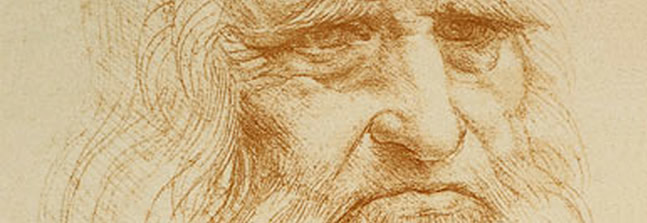The genius of Leonardo: myth or reality?
“Truly marvellous and celestial was Leonardo”: with these words Giorgio Vasari, a 16th century Italian art historian, described Leonardo, while writing his biography.
Although it is true that Leonardo’s achievements will always remain an object of wonder and admiration, it is also necessary to put these words into context. The idea of the artist as a unique genius can, in fact, be seen more as a cultural stereotype with a very old tradition dating back to 4th century Greece rather than an objective statement. This myth gained momentum in the Renaissance when artists rose to a better social status and their talent was much sought-after by the rich and powerful aristocracy. Leonardo’s popularity as a genius was then reinforced in the 18th and 19th century thanks to the Romantic movement.
Could Leonardo Fly? Watch our video and find the answer!
However, to truly understand the cultural legacy of Leonardo, it is important to adopt a more objective perspective. Leonardo was, in fact, both a Medieval and a Renaissance man, deeply rooted in the surrounding culture he experienced. Nonetheless, he appears also to be so familiar to us exactly because he was one of the first figures to adopt empirical research based on observation, a cornerstone of modern science as it is still conceived nowadays.
An eclectic man

Leonardo, aerial screw - Manuscript B, folio 83 v. Codex Atlanticus
What remains unquestionable is the fact that Leonardo was a multi-talented figure with a wide range of interests. There was nothing in nature which did not arouse his curiosity and challenge his mind. His work can be used as a starting point to examine a whole set of contemporary fields of knowledge. For example, Leonardo contributed to the study of anatomy by dissecting corpses to find out the actual functioning of the human body; in the field of physics he investigated the laws of waves and currents and the flight of birds. He was also a civil and military engineer involved in the construction of fortifications and canals.
All his studies were then applied to other fields. Inspired by the flight of birds he designed a flying machine; thanks to the study of nature he painted realistic landscapes in the background of his paintings and from the study of acoustics he gave proper gestures to the apostles in the Last Supper.
Between tradition and modernity
Leonardo studied at the Verrocchio’s workshop in Florence. Every artistic commission was a cooperative venture with several artist-craftsmen contributing to the final work. Hence, Leonardo was a team player and not just a solitary genius. Similarly he had a mystical vision of the world as animated by hidden powers, connecting everything. Leonardo was influenced by the traditional medieval analogy between the earth as a macrocosm and the human body as a microcosm.
The most significant contribution Leonardo made regards, however, the method he adopted to investigate nature. He started off by observing natural phenomena trying to understand their underlying fundamental laws. He always kept an open mind about the results obtained even if these contrasted with the theories generally held as correct.
Leonardo's shortcomings
Despite the fact that Leonardo’s achievements are nowadays broadly praised, you should also be aware of the shortcoming of the man. For painting the Last Supper mural he dismissed the traditional fresco technique and attempted to paint the wall in layers using a mixture of tempera and oil paint. The final result was extraordinary as Leonardo was able to work slowly, brushstroke by brushstoke but the painting started to deteriorate already a few years after completion with layers of paint chipping off.
The recognition that Leonardo contributed significantly to the development of science in various fields has, however, to be tempered by the fact that he actually failed to communicate his discoveries, which remained hidden in his numerous notebooks. He had plans for publishing a treatise on anatomy, whose impact would have been revolutionary, but the project never became a reality due to a lack of time.
The range of his interests was also a cause of frustration for Leonardo. He saw his endeavours as an integrated whole since there was actually considerable cross-fertilisation between the various disciplines he engaged with. He was searching for ‘eternal unchanging something’, the ‘building blocks’ of the physical world. To study and understand everything was, however, an impossible task. In brief, Leonardo was not a solitary genius detached from his age but a remarkable expression of a great period of human history.


